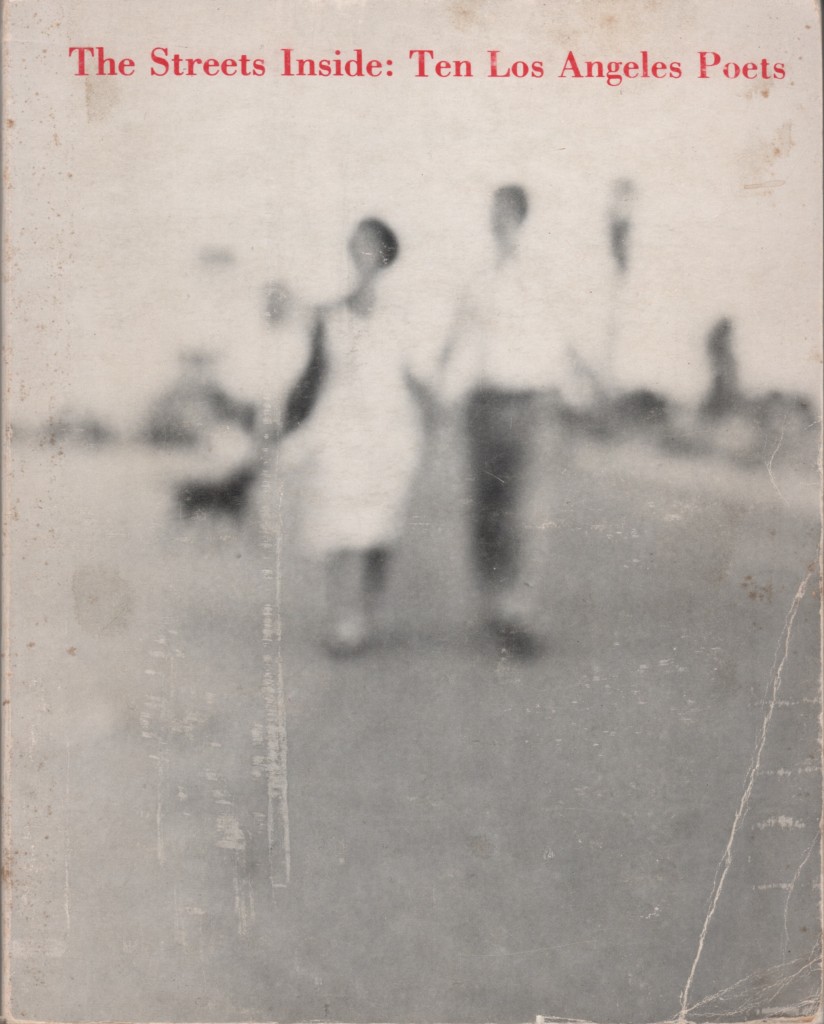Saturday, January 21, 2017
Lana Turner, issue number 9
“A Reunion Party of Sorts,” by Mike Sonksen – January 16, 2017
Lana Turner Journal has just published Mike Sonksen’s comprehensive review of Cross-Strokes: Poetry between Los Angeles and San Francisco, the anthology which Neeli Cherkovski and I devoted half a decade to co-editing. Sonksen meticulously acknowledges every contributor to the anthology and provides representative sample of their poems. In a way that I am sure he is not aware of, he has followed the instructions on the permissions form that we had to negotiate with New Directions. No poet was to get a larger billing in any advertisement we would take out. This is to say that we were not allowed to promote the book by putting Kenneth Rexroth’s and Nate Mackey’s names in big type and Kevin Opstedal and Sharon Doubiago in small type. Not that Neeli and I would have ever done otherwise!
The next reviewer should have a much easier task, should she or he be willing to “collaborate” with Mike the Poet, as Sonksen is also known as. This is to say that a follow-up review might well benefit from focusing on a comparison of Cross-Strokes with other “regional” anthologies, including those that do not acknowledge themselves as such. It always amuses me to see anthologies that assume they present a national survey of American poetry, but have far less than ten percent of their contributors based in California.
Here is the link to Mike Sonksen’s review:
http://www.lanaturnerjournal.com/blog/a-reunion-party-of-poets
One very gratifying aspect of the roster of poets Cherkovski and I were able to assemble was their compatibility. If one were to try to put together a chronological anthology, the task might prove to be overwhelming. Consider trying to assemble a volume of poets born in the 1940s, a project that would probably fracture almost at the onset as poets or their executors point-blank rebuffed being associated by juxtaposition with figures inimical to their hopes for the art. Such an anthology, however, is probably needed if one is to understand how “post-modernism” pushed away from the massive influence of Donald Allen’s anthology, The New American Poetry. Maybe the most important part of this potential anthology would be not the poems, but essays at the end in which the poets address their “generation(s)” within that decade’s outset. The time to begin requesting these essays is the next four years, while the surviving remnant of American poets born in the 1940s will still be fairly substantial. This will not hold up indefinitely; after all, we were forced to pause and consider the inexorable attrition of our ranks this past year with the deaths of two poets, Ted Greenwald and Ray DiPalma, who first appeared together in an anthology back in 1985. In many ways, that year marked a turning point in American poetry. Three major anthologies appeared in 1985: In the American Tree, edited by Ron Silliman; “Poetry Loves Poetry,” edited by Bill Mohr; and The Morrow Anthology of Younger American Poets, edited by David Bottoms and David Smith. The Morrow Anthology represented the first indication of the rapid growth of MFA programs in the United States since 1980, while Silliman’s and my anthologies presented a case for writing that centered itself on other questions of poetry’s social value other than academic legitimacy.
I did not ever meet Ray DiPalma, though I certainly remember the first anthology in which I saw his work: Quickly Aging Here, edited by Geoff Hewitt. DiPalma appeared frequently in Invisible City magazine, edited by Paul Vangelisti and John McBride, and continued to be published by Vangelisti throughout the rest of his life. One of DiPalma’s other long-time supporters and allies was Michael Lally, who has posted his recollections on his blog, “Lally’s Alley.” According to Lally, there will be a memorial for DiPalma on Wednesday, February 15, at the School of Visual Arts Gallery from 6 – 8 p.m. (601 West 26th Street).
http://blog.bestamericanpoetry.com/the_best_american_poetry/2016/12/ray-dipalma-rip-by-michael-lally.html
I heard Ted Greenwald read several times over the decades. The first time was at a bookstore called Intellectuals & Liars, which was located near the corner of 11th Street and Wilshire Boulevard in Santa Monica. It was an odd pairing: he read with Kate Braverman, who left the reading grumbling about Greenwald’s lack of personal narrative. Although I had published Kate’s first book, Milk Run, a couple of years earlier and was very pleased that she went to become a successful novelist, I was more impressed and intrigued that night with Greenwald’s work, and I was excited when he read in Los Angeles again, at Beyond Baroque, shortly after Dennis Cooper took over the reading series. It was a quarter century before I saw read again, at St. Mark’s with Lyn Hejinian. He was as on key as ever, and his “voice” (which almost always seems like an illusory concept to me) was as pitch-perfect to his vision as it had been when I first heard it.
That I am hardly alone in my profound admiration for Greenwald’s poetry was reflected in the line-up of poets who spoke at his memorial service at St. Mark’s Poetry Project back on September 16, which included Alan Bernheimer, Charles Bernstein, Alan Davies, John Godfrey, Erica Hunt, Michael Lally, Ron Padgett, Kit Robinson, Patricia Spears Jones, Stacy Szymaszek, Chris Tysh, Lewis Warsh, Barrett Watten, and Terence Winch

 About Bill Mohr
About Bill Mohr